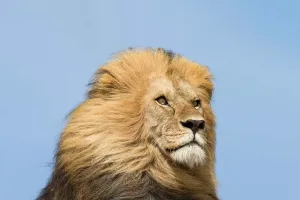The Persian cat originated in Persia and was brought to Europe by an Italian traveler, Pietro Della Valle, in the 16th century.
The Persian cat seen today is a descendant of a native longhair cat in the Middle East and a Turkish Angora longhair cat. It was born in the United Kingdom in 1860 after more than 100 years of selective breeding.
Persian cats have a lovable face, long and gorgeous back hair, and elegant manners, so they are known as "the prince of cats" and "the princess".
They are one of the most popular purebred cats among cat lovers in the world and occupy an extremely important position. Worldwide, the Persian cat has been extremely popular, and many cat owners are proud to have a Persian cat.
The coat color of the Persian cat is roughly divided into five color families, with nearly 88 coat colors.
Monochrome: white, black, blue, red, cream, etc.
Chinchilla: There are mouse gray (hair tip color), gradient silver, gradient gold, etc.
Smoke color system: smoke color (hair root white, gradient blue, gradient red, etc. Tabby colors include silver, brown, red, cream, blue, etc.).
Mixed colors: Tortie, Calico, blue cream, black and white, blue and white, red and white, milky white. Red (mostly male) and Tortie (mostly female) are rare in coat color, so Persian cats in these colors are also very valuable.
CFA subdivides Persian cats into 7 subspecies according to the distribution of coat color: Solid Color, Silver & Golden, Shaded & Smoke, Tabby, Parti-Color, Calico & Bi-Color, and Himalayan.
GCCF subdivides Persian cats into 12 subspecies according to their coat color distribution: Bi-Colour, Cameo, Chinchilla, Colourpoint, Exotic (Short haired, Persian type), Golden, Pewter, Self, Shaded Silver, Smoke, Tortie Tabby, Tortie & White.
Although the Persian cat once swept the world, it seems to appear less and less in people's field of vision now. Why?
1. More and more cat breeds
With the expansion of market demand and the changing aesthetics of people, there are more and more cat breeds on the market, and people have more choices. Persian cats are no longer sought after.
2. Have a genetic disease
While any cat can have polycystic kidney disease, Persian cats are the most prone to it. About 36-49% of Persian cats carry the polycystic kidney gene.
Because of this genetic disease, the owner needs to spend medicine and time treating it, which is laborious and expensive, and many people are unwilling to support it.
3. Poor physique
Persian cats, as "aristocrats among cats", are also relatively poor in physique, and they need your good care. In particular, its stomach is very weak, and it must be carefully fed at ordinary times, otherwise, it is easy to vomit and have diarrhea.
So feeding must be light and nutritious.
4. Long hair is difficult to manage
Persian cats are long-haired cats, and naturally, take care of their hair. If the pet owner does not take care of it regularly, the Persian cat's hair is easy to get knotted, and it will become ugly and dirty like a "beggar". And Persian cats are prone to shedding.
5. Easy to have tears
The flat face and short nose of the Persian cat make it easy to cry, so the owner should pay special attention to cleaning the cat's eyes and nose. It is recommended to scrub the face once a day for it. It is best to choose low-salt and light cat food as the main food.


